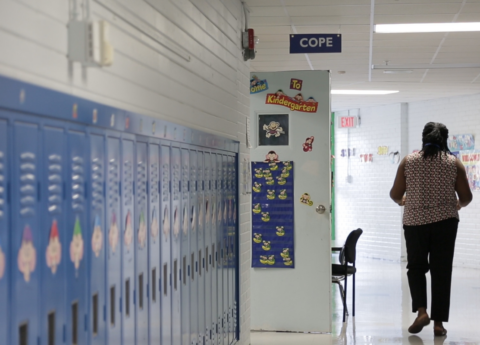Postsecondary education is increasingly recognized as an important means of improving the economy and increasing the financial well-being of individuals and families. But given Kentucky’s serious educational challenges, the state must start early in the education pipeline—including with a major focus on efforts that help adults obtain basic education, make the transition to higher education and then acquire a credential or degree.
Efforts to increase the percentage of adult education students who are transitioning to college are especially important given the low levels of education among adults in Kentucky, the growing skills gap and limited economic opportunities available to those with low levels of education.
In addition, Kentucky simply cannot make substantial improvement in overall educational attainment any time soon by focusing on traditional-age students alone. The state and country have ambitious goals to meet: the Obama administration aims to raise the national college completion rate from 40 to 60 percent by 2020, while Kentucky has established a goal to increase the share of adults with college degrees from the current rate of 32 percent to 43 percent.1
Efforts to increase college graduation rates abound, but very few treat adult education students as a critical target.
According to a new Working Poor Families Project policy brief, historically most adult literacy providers have viewed the endpoint of their services as the GED rather than a college degree or credential. However, there is an increasing recognition of the importance of helping low-skilled adults enter and succeed in higher education. The policy brief highlights three states—including Kentucky—that are leading the way by aligning adult education with postsecondary education systems in various ways.
Kentucky adult education efforts highlighted in the report include setting a statewide goal for the share of adults earning GEDs who transition to postsecondary education and establishing the Common Core Standards—developed by the National Governors Association and the Council of Chief State School Officers and adopted by 47 state public K-12 education systems—for adult education in Kentucky; instituting these standards should help ensure that the adult education curriculum is preparing students to succeed in college and beyond.
However, despite the state’s innovations, Kentucky’s adult education challenge is daunting. Approximately 26 percent of students earning GEDs enter postsecondary education within two years, but the state does not collect data on the further academic progress and graduation rates of these students.2 And only a modest share of adults without a high school education or GED enrolls in adult education courses.3 Progress may also be slowed by state budget cuts. As noted in a previous post, General Fund appropriations for adult basic education are 11 percent below their 2012 levels in the 2013-2014 state budget.
- Patrick J. Kelly, “Realizing Kentucky’s Educational Attainment Goal: A Look in the Rear View Mirror and Down the Road Ahead,” National Center for Higher Education Management Systems, September 6, 2011, http://cpe.ky.gov/NR/rdonlyres/81AB2E18-9122-4BAA-86C1-B6804D2CCE9A/0/NC…. ↩
- Kentucky Adult Education, “GED Graduates Enrolling in Kentucky’s Colleges and Universities within Two Academic Years FY 2007-11,” http://www.kyae.ky.gov/NR/rdonlyres/FEBCB71E-9B98-4F05-81EB-5D2CB0F29067/0/GEDGradsEnrllCollegesUniv.pdf. ↩
- In Kentucky in 2011-2012, 39,487 students were enrolled in adult education. Kentucky Adult Education, “Enrollment Summary, Number of Students 2008-2012,” http://www.kyae.ky.gov/NR/rdonlyres/96373AEE-E8CF-4E6D-BFB3-16BA07D97AEE/0/Enrollmentsummary0812.pdf. More than a third of adult education providers surveyed in 2009 reported having waiting lists for service. Lennox McLendon, “Adult Student Waiting List Survey,” National Council for State Directors of Adult Education, 2010, http://www.naepdc.org/publications/2010%20Adult%20Education%20Waiting%20List%20Report.pdf. ↩



